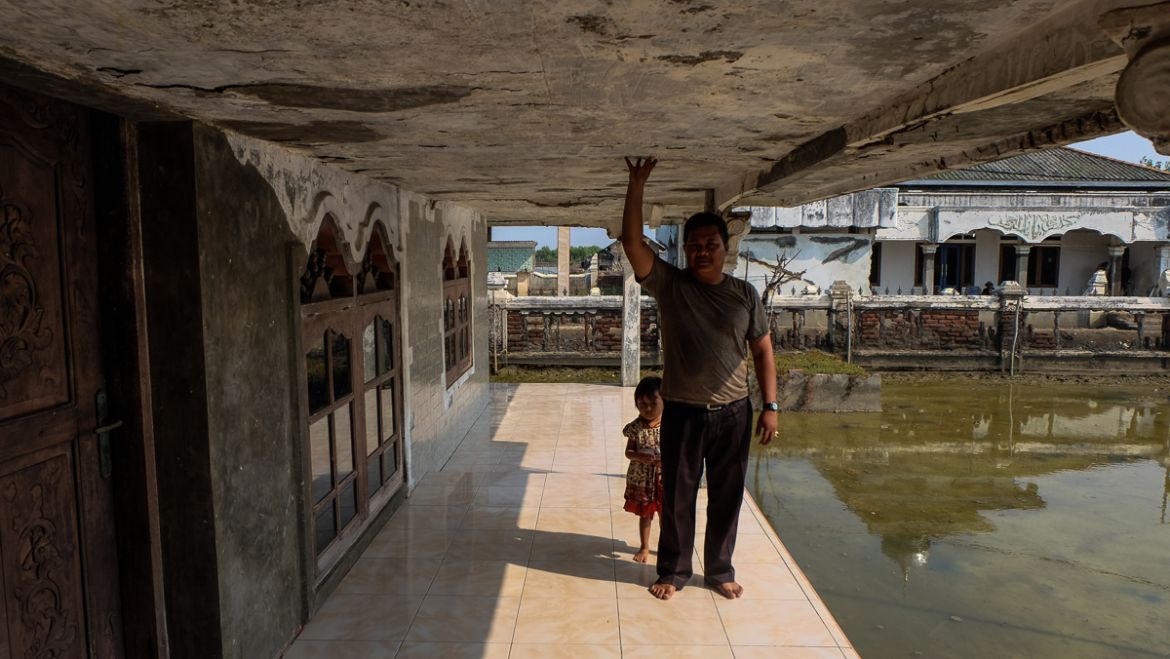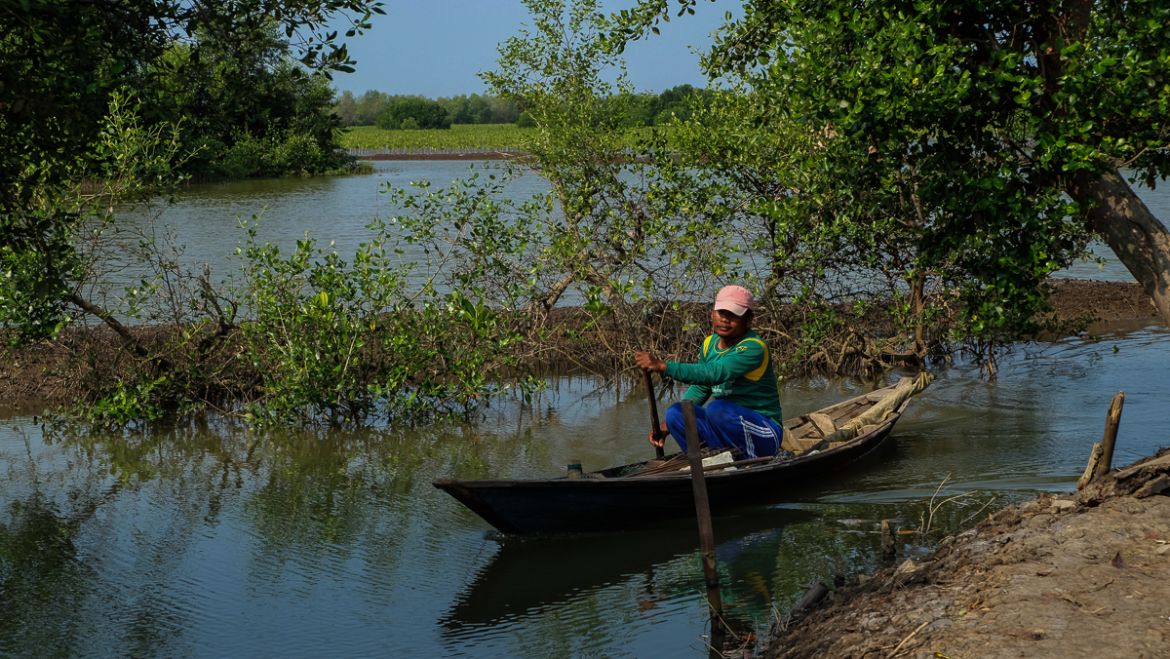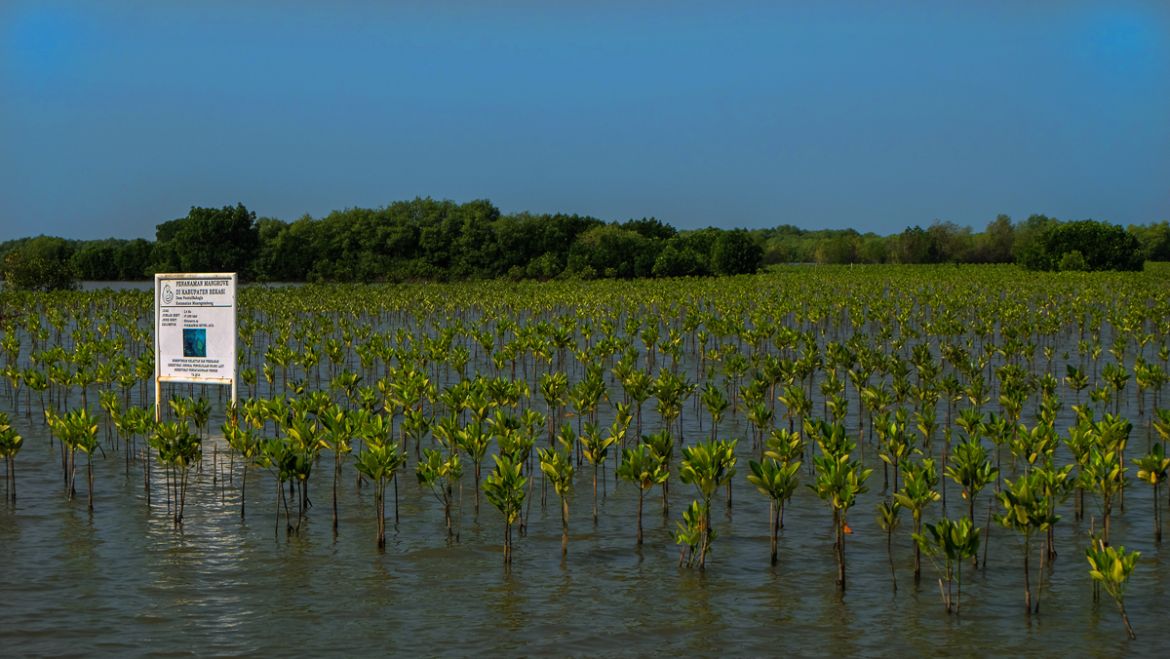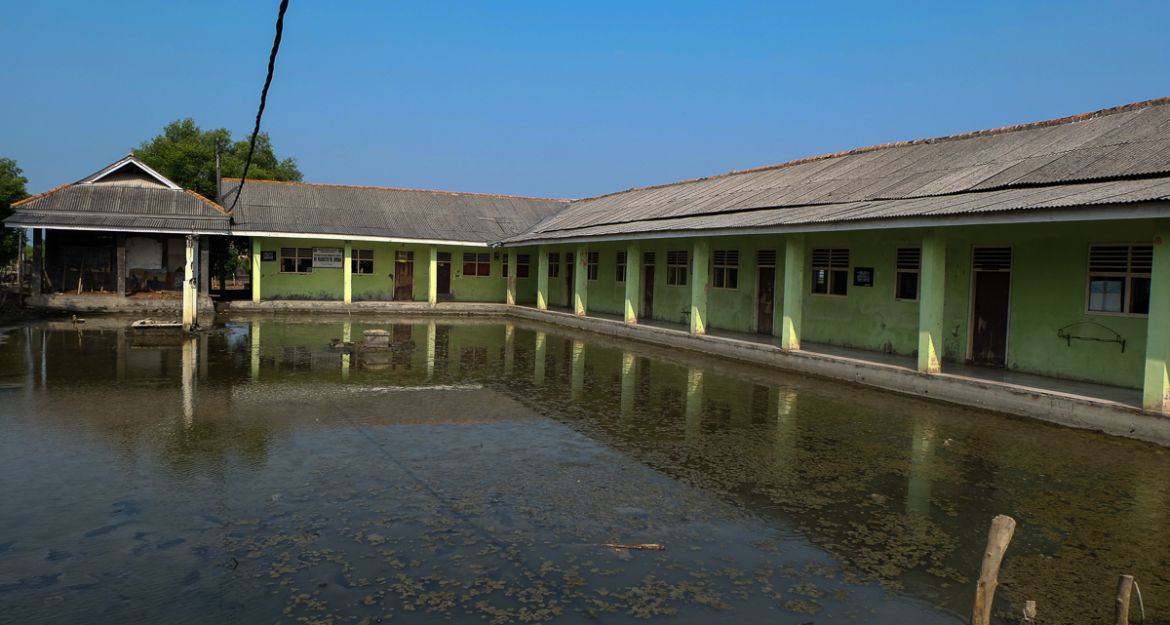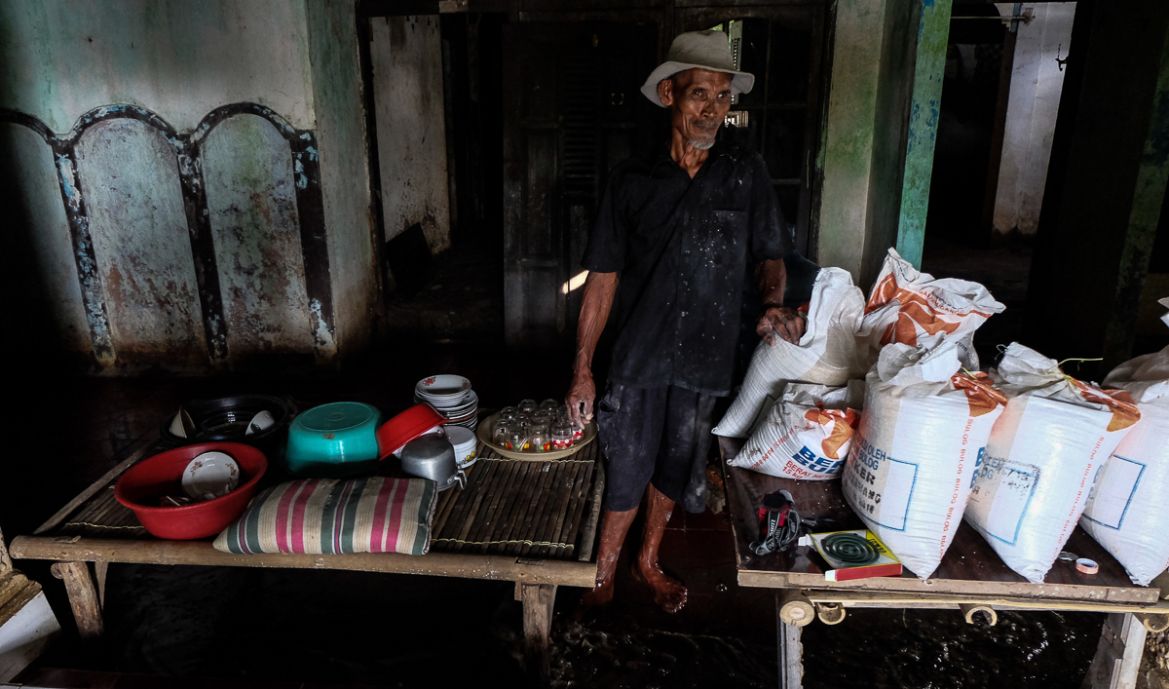In Pictures
The drowning villages of Indonesia
The water level rises ever higher with each passing year. Every high tide brings the sea into their homes.
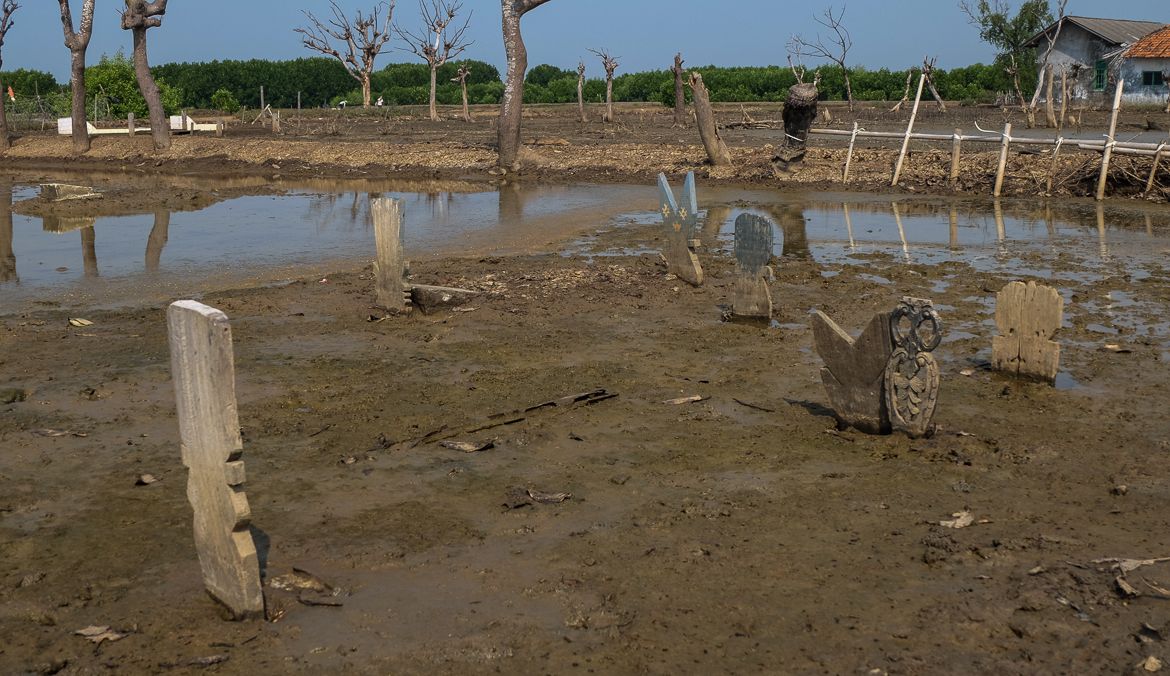
Bekasi, Indonesia – Rising sea levels have forced people to leave their homes in four villages located in Bekasi, on the Indonesian island of West Java. Those who have remained face difficult living conditions.
Pantai Bahagia village, located about one kilometre from the sealine is the most affected by the rising sea. Nearly 80 percent of the population here have felt the effect of the encroaching sea waters. The water level rises ever higher with each passing year. Every high tide brings the sea into their homes.
Just a few decades ago, thousands of families inhabited these fishing villages. Now, only a few hundred remain, because they have nowhere else to go. Once they made a good living farming prawns and fish, but their livelihood is gone now. Since the sea level started to rise and flood their ponds in 2005, they scramble to find work just to make ends meet.
These villages represent only a small part of the densely populated Bekasi coastal areas, which are struggling with the impact of climate change. Experts have predicted that before 2050, around 42 million homes around coastal areas will be at risk of flooding, and as many as 1500 small islands in Indonesia could disappear due to the rising sea levels.



